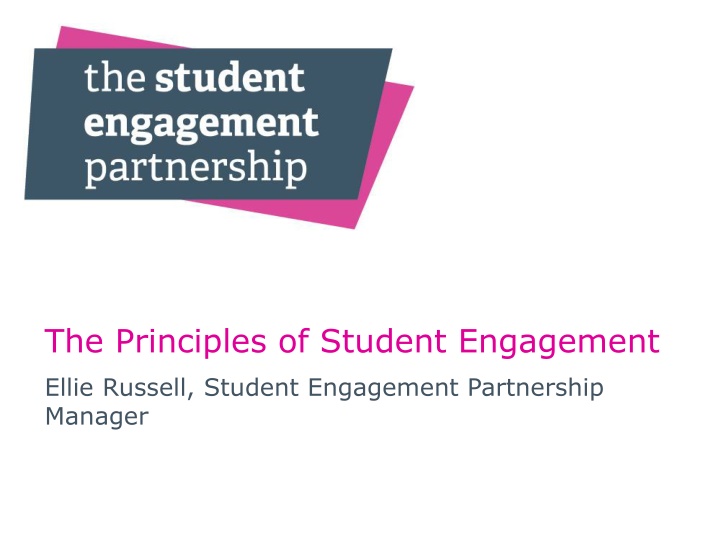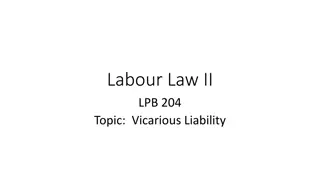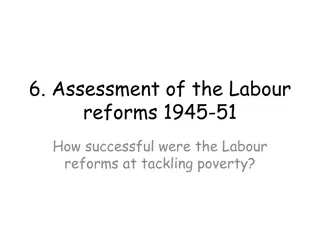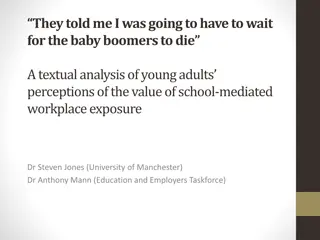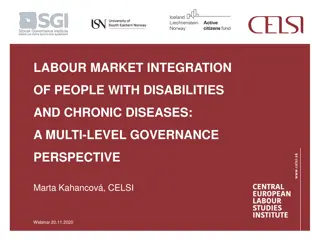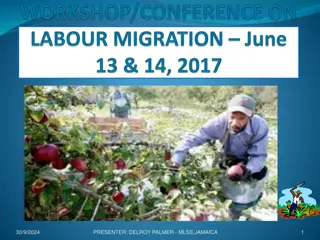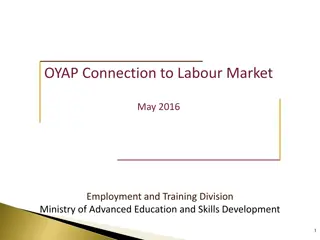Employer Engagement for Improved Labour Market Matching
Explore new approaches to employer engagement in labor market policies to enhance matching between job seekers and employers. Focus on aligning business needs, improving employer experience, and delivering targeted services. Strengthening engagement can lead to better employment outcomes and increased efficiency in job placements.
Download Presentation

Please find below an Image/Link to download the presentation.
The content on the website is provided AS IS for your information and personal use only. It may not be sold, licensed, or shared on other websites without obtaining consent from the author.If you encounter any issues during the download, it is possible that the publisher has removed the file from their server.
You are allowed to download the files provided on this website for personal or commercial use, subject to the condition that they are used lawfully. All files are the property of their respective owners.
The content on the website is provided AS IS for your information and personal use only. It may not be sold, licensed, or shared on other websites without obtaining consent from the author.
E N D
Presentation Transcript
The Principles of Student Engagement Ellie Russell, Student Engagement Partnership Manager
About TSEP The Student Engagement Partnership supports, develops and promotes student engagement activity in the higher education sector in England. A strategic partnership across the English HE sector agencies and representative bodies. An NUS-hosted staff unit delivering projects, research and practitioner support.
Developing the principles Many articles, conference papers and chapters on student engagement do not contain an explicit definition of engagement, making the (erroneous) assumption that their understanding is a shared, universal one. (Trowler, 2010, 17)
Question Is there a shared understanding of the term student engagement at your institution? A= Yes B= No C= Not sure
Defining student engagement No definitions = no shared framework for action and enhancement Without one you might end up going in opposite directions or round in circles
Student engagement in the UK Lots of work on student engagement in learning, but also a focus on student voice embedded in processes and structures and the idea of students as partners. Articulating the values associated with student influence, why we think it matters and what less tangible outcomes we think it delivers Student engagement practices are not new but student engagement as a policy priority is relatively recent. Moving beyond systems and instead describing concepts e.g. potential of individuals to influence their environment.
Partnership Partnership is about students and staff working together to improve education. More than the sum of its parts. Culture of a higher education community. A way of doing things, rather than an outcome in itself .
The Principles Intended to be iterative and a starting point for conversations. Teaching & Learning Quality Assurance & Enhancement Governance, Decision Making & Strategy
Learning & Teaching 1. Students are active members of a learning community 2. Students engage in setting the direction of their learning 3. Students engage in curricula content, design, delivery & organisation 4. Students engage in the enhancement of teaching feedback and assessment practices 5. Students engage in and with their learning
Question Do you have a mechanism for students to recognise and reward excellent teaching at your institution? Yes= A B= No C= Not sure
Quality Assurance & Enhancement 6. Students are supported to fully engage in internal quality processes 7. Students effect change in a continual process of enhancement
Decision Making, Governance & Strategy 8. Students engage in the process of making decisions that affect them 9. Student engagement is given strategic leadership 10. Students engage through effective student leaders and governors
Question Student leaders (e.g. elected representatives) are an essential part of the community at my institution? A= Yes B= No C= Not sure
Next steps An updated version of the principles of student engagement: Tips on using the principles to support local conversations Re-organising the principles based on feedback from The Conversation Sign-posting to examples of good practice
Question Do you think participating in co-curricular activities mean students are more or less likely to be engaged with their academic studies? A= More likely B= Less likely C= Not sure
Question Do you think participating in extra-curricular activities mean students are more or less likely to be engaged with their academic studies? A= More likely B= Less likely C= Not sure
Challenges Engaging the less engaged and hard to reach student groups Addressing power imbalances between staff & students and institutions & students unions Applying and adapting student engagement models across diverse contexts Understanding and influencing institutional change Understanding industry practice and working with awarding bodies
Challenges A need for more high-quality local and national training Insight on supporting student governors Challenges associated with low resource availability (time, budget) Avoiding tick-box or superficial engagement activities Developing student representative systems
Get involved, stay in touch ellie.russell@nus.org.uk www.tsep.org.uk @TSEPartnership
